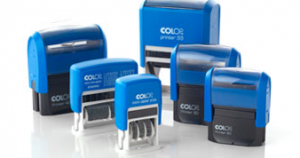Are you thinking about starting up a loyalty card scheme for your small business? If so, we don’t blame you! Loyalty cards are powerful marketing tools, providing customers with an obvious incentive for returning to your company after they’ve made their first purchase.
On today’s high street, you’ll struggle to find a single café, book shop, dog groomer or other small business which doesn’t have some sort of loyalty scheme in place. By promising a deal, discount or freebie for returning customers, you ensure that members of your target audience will choose your business over a competing establishment when they’re next in need of the product or service that you offer.
Read on to discover exactly how loyalty cards work, and how they can work wonders for a business like yours.
What Are Loyalty Cards and How Do They Work?
Loyalty cards are designed for the all-important purpose of customer retention. All business owners know that, as important as it is to attract new customers, retaining existing customers is even more crucial.
Many marketing studies have shown that the longer someone has been a customer of a particular brand, the more money they’re likely to spend there. They’re also more likely to keep coming back to this particular company again. Loyalty cards give customers a tangible, clear reason to keep shopping with you, rather than trying out a competitor – hence their name.
Most loyalty cards work on the basis of offering a free gift once the customer has made a certain number of purchases. For example, a hairdresser may offer the 10th cut free. With each haircut, the customer receives one stamp on their loyalty card. Once they’ve collected 9 stamps, they can hand the card over for a free snip. Loyalty cards can also be points-based, with points awarded depending on the amount of money spent; this is a common scheme at supermarkets.
Any kind of business can implement a loyalty card scheme, no matter your target audience, and regardless of whether you sell products or services. Small and large companies alike all benefit from customer retention!
What Types of Loyalty Cards Are There?
There are many different variations of loyalty card schemes. They can be divided into three main types: punch/stamp loyalty cards, points-based loyalty cards, and VIP membership cards.
Punch/Stamp Loyalty Cards
The simplest and most straightforward type of loyalty card is the classic punch/stamp loyalty card. These cards are printed on disposable cardstock and are designed to be hole-punched or stamped when the customer makes a purchase.
For example, a coffee shop may offer each customer their 10th coffee free. For each coffee the customer purchases, they get one stamp on their loyalty card (or one hole is punched out of it). When the customer has collected 9 stamps/holes, they can present the card for a free beverage.
These types of cards are designed to be thrown away after the customer has collected a sufficient number of stamps and collected their reward. Once the customer makes their next purchase, they’re given a new card to start collecting stamps again.
Stamp loyalty cards are perfect for small businesses just starting to experiment with different marketing techniques. You don’t need to have an app or a website to use these cards, and you don’t need to take your customers’ details.
Points-Based Loyalty Cards
Points-based loyalty cards are like a step up from punch or stamp loyalty cards. Instead of getting a stamp when purchasing an item, the customer can earn ‘points’ for each purchase made. The number of points given out is usually based on how much money the customer spends.
Accrued points can then be used as cash (to be spent exclusively in your shop, of course). Alternatively, points may add up to rewards such as a free gift or special offer.
A well-known example of a points-based loyalty card system is Nectar. At Sainsbury’s, customers earn 1 Nectar point for each £1 they spend in-store. Once a certain number of nectar points have been accrued, customers can spend them on shopping, as they would a gift card. 100 Nectar points are currently worth 50p.
Points-based loyalty cards are, obviously, a lot more convoluted and trickier to implement than classic stamp loyalty cards. You’ll need to obtain your customers’ details to set up their account, and you’ll generally need an app or a website so that your customers can see how many points they have.
VIP Member Cards
VIP member cards are similar to points-based loyalty systems, but taken up a notch. These are special cards that give the customer “VIP status”. The possession of a card might grant them exclusive promotions, benefits, products or discounts that non-members don’t have access to.
These member cards may also involve a points system, or they may simply offer incentives for signing up and being a member, regardless of how much money is spent. An example of such a scheme is Tesco’s Clubcard. Clubcard members are offered special discounted prices on products. For example, a pack of sausages may cost £3 for normal shoppers, while Clubcard holders only have to pay £1.50.
VIP member cards can also be tiered. This means that you can climb a tier system depending on how much money you’ve spent with the company overall. Higher tiers of membership unlock better benefits.
Most VIP programs are free, but some cost a fee to enter (e.g. Costco membership or Amazon Prime).
Are Loyalty Cards Worth It for My Business?
Loyalty schemes can work magic for any business, whether you run a small, independent company or a multi-national corporation. Studies have proven time and time again that retaining customers is crucial for any business’s success, and that loyalty schemes are a great tool in this.
75% of consumers claim they’d be more likely to make another purchase with a company if they’d received an incentive of some kind. This makes sense – after all, if you’ve already got 3 stamps towards a free coffee at your local café, why would you go anywhere else?
Yes, it will cost to implement a loyalty card scheme – but as it costs five times as much to attract a new customer than it does to keep an existing one, it’s absolutely worth it. It’s up to you what kind of reward you offer – it doesn’t need to be a particularly expensive ‘prize’, just as long as it’s attractive enough to keep your customers coming back. And you’ll easily make back any money you spend on a loyalty card scheme, as your customers will spend more money with you than they would have otherwise.
Offering a loyalty card scheme means that your past and existing customers are motivated to keep coming back to you, rather than visiting a competitor. Whether you’re a café, a hairdresser, an MOT centre or an airline, a loyalty card scheme will help you retain your long-standing clients.
Where Can I Buy Cheap Loyalty Cards?
If you’re looking to start up a loyalty card scheme for your small business, we’d recommend starting out with a simple hole-punch or stamp loyalty card. At 123Print, we stock a huge range of loyalty card designs, so you’re bound to find one that will suit your company’s aesthetic.
We also offer a blank loyalty card template, so you can create your own design entirely from scratch. Feel free to upload your own logo or artwork, and edit the text, font and colour to your liking.
Our straightforward pricing means the more you order, the more you save. Our loyalty cards are printed to the highest quality on sturdy cardstock cardstock, and are designed to be stamped or hole-punched with each purchase. When the card is spent and the customer wants to redeem their freebie, you can simply dispose of the used card with your paper recycling.
We also sell rubber stamps, perfect for marking your customers’ loyalty cards when they make a purchase. Choose from one of our designs or upload your business’s logo for a truly personalised stamp!

